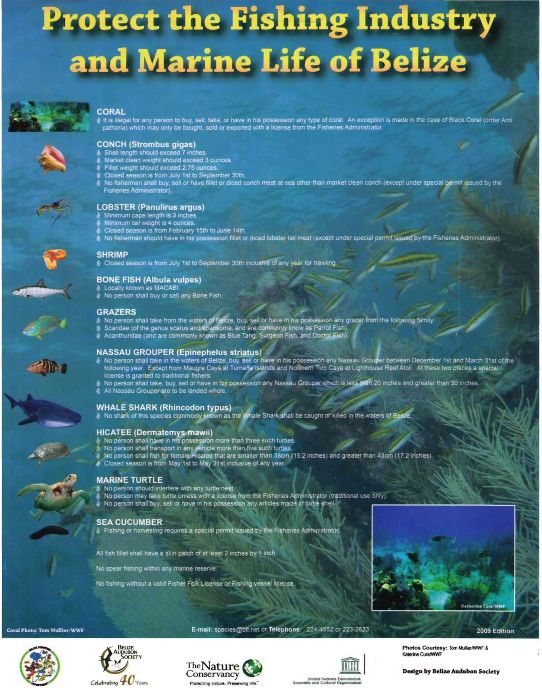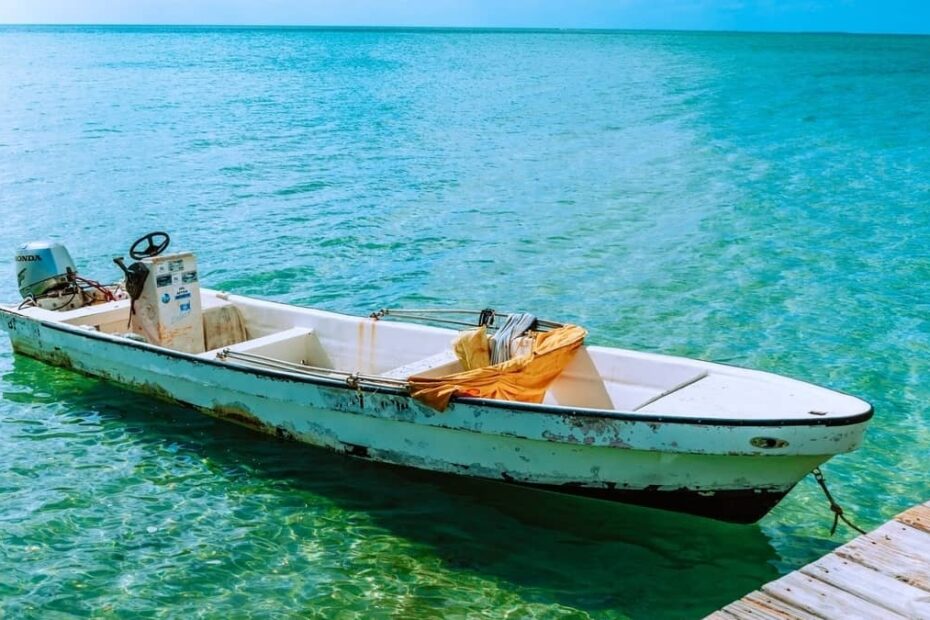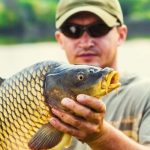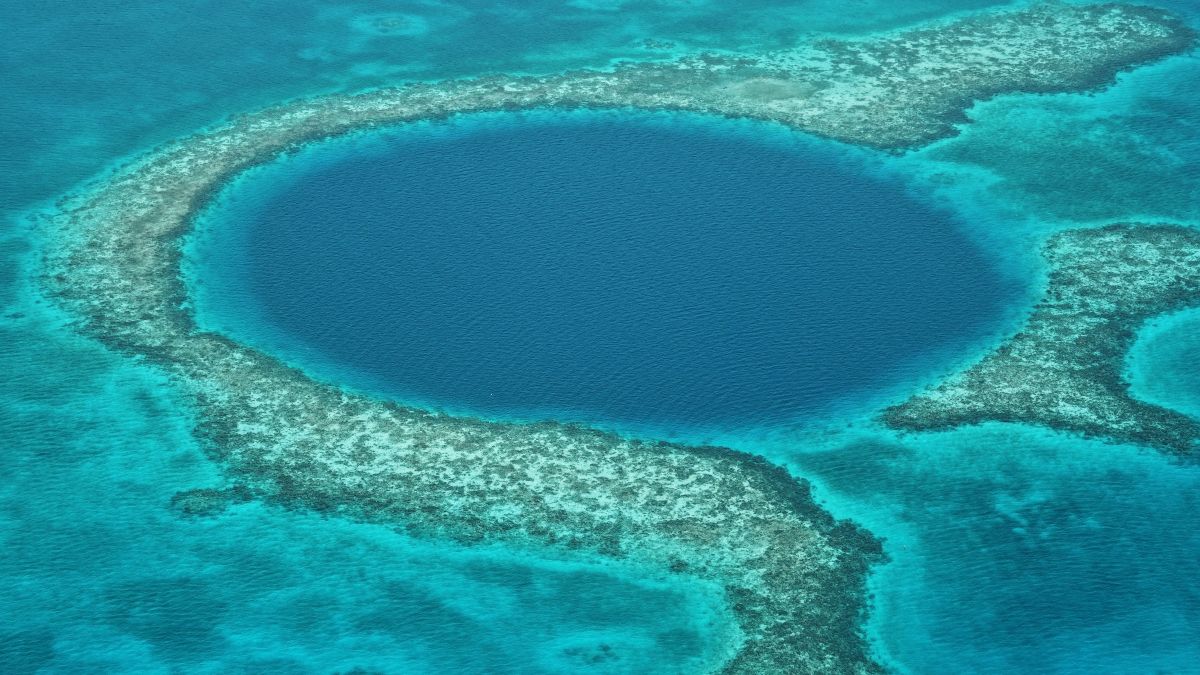Blogger Kenneth Reaves talks about fishing in Belize and why this Central American country offers some of the best angling opportunities in the Caribbean.
Belize is a tropical paradise, well-known as a sport fishing destination. With almost 300 kilometers of Caribbean coastline and some 450 offshore cayes, Belize offers a wonderful challenge to anglers of all levels. So if you’re looking for something new, exciting, and adrenaline-pumping, fishing in Belize fits the bill.
Whatever type of fishing experience you’re after, there’s something for you here.
In sport fishing parlance, Belize is home to all of the “Big Three”; tarpon, bonefish, and permit. Each of these fish put up a serious fight, making them the most prized catches for anglers. They’re all catch-and-release in Belize, but it’s the fight and the photo that most anglers seek.
I love fishing in Belize, and I hope anglers of all abilities will find this guide helpful for preparing the fishing trip of a lifetime!
What Kind of Fish can You Catch in Belize?
Bonefish
Bonefish, often referred to as the “gray ghost”, are highly sought-after by anglers in Belize. These fish are prized for their speed, agility, and challenging nature. They can be found in various environments around Belize, with a particular preference for light-sand flats with turtle grass. Anglers also find bonefish near river mouths.
When targeting bonefish, anglers typically use an 8-weight rod paired with shrimp imitation lures and ¼ or ⅛-ounce skimmer jigs. Patience and precision are essential when pursuing these fish, as they can be skittish and wary of potential threats. Successfully hooking and reeling in a bonefish requires strategic casting and keen observation of their behavior.
The thrill of landing a bonefish after a patient pursuit is what draws many anglers to Belize. Despite their elusive nature, bonefish offer a rewarding challenge and a memorable fishing experience. Whether casting from the shore or wading in shallow waters, anglers can enjoy the excitement of encountering these elusive creatures in the beautiful surroundings of Belize’s coastal regions.
Tarpon
Tarpon are a prized species among anglers in Belize, known for their impressive size and fighting spirit. These powerful fish can grow up to 200 pounds, providing many anglers with the challenge of their fishing lives. Tarpon feed on small baitfish, crabs, and shrimp, making them an exciting catch for those equipped with appropriate flies or live bait.
Anglers often find tarpon in the flats, where they can be found feeding or seeking shelter among the mangroves. Successfully hooking a tarpon requires skillful casting and strong fishing tackle. An 11- or 12-weight rod with a floating line is recommended to tackle these formidable fish.
The adrenaline rush of battling a tarpon is a highlight for many anglers visiting Belize. Once hooked, tarpon are known for their acrobatic jumps and powerful runs, testing the angler’s strength and endurance. Despite their formidable reputation, tarpon can be successfully landed with patience and determination.
Permit
Permit are highly prized by anglers in Belize for their challenging nature and impressive size. These fish feed primarily on shrimp and crab, requiring skilled imitation to lure them in. Flies such as raghead or Merkin are commonly used to entice permit bites.
Anglers often find permit congregating in flats and shallow waters, where they can be spotted in small groups. Successfully hooking a permit requires precise casting and keen observation of their behavior. A 10-weight rod with a floating line and a 15-pound tippet is recommended to tackle these formidable fish.
View this post on Instagram
Other Fish to Catch in Belize
Snook
Famous for their impressive fighting abilities, snook are a popular target for anglers in Belize. These fish often put up an excellent fight, displaying exciting acrobatics once hooked. Anglers should be prepared for the challenge of keeping snook away from underwater structures, as they have a tendency to wrap fishing lines around them during the struggle.
Snook prefer to feed in low light conditions, making dawn and dusk the prime times for targeting them. Anglers commonly use topwater lures during these periods, switching to sinking lures if fishing during lighter hours. Brightly-colored surface poppers are particularly effective in enticing snook bites.
When angling for snook, a 9- or 10-weight rod is recommended to handle their strength and agility. Successfully landing a snook requires skillful casting and precise maneuvering to control the fish during the fight.
Snapper
Coming in a range of differeent species like mutton, gray, yellowtail, dog, and cubera, snapper are abundant in Belizean waters and are often targeted for their delicious taste and satisfying catch. Snappers can be caught using an 8- or 9-weight rod paired with a spinning reel equipped with 10- to 15-pound line.
Poppers and rapalas are commonly used as lure options, while live bait such as sardines and other baitfish can also be effective in attracting snapper bites. Anglers enjoy the thrill of hooking snappers, as they put up a respectable fight upon being caught. And when you catch them… well… they are, as we said, delicious and excellent fish to cook. There are no catch-and-release laws for snappers in Belize, so if you catch a good-sized one, you’re set for dinner.
Wahoo
Wahoo are aggressive and fast-moving fish that will give you a good run for your money. Anglers love these creatures for their powerful runs and thrilling fights. When hooked, wahoo often put up a significant struggle, often running with fishing lines at speeds of up to 60 miles per hour.
In Belize, wahoo typically weigh between 20 and 40 pounds, although larger specimens exceeding 100 pounds can occasionally be found. Anglers often use a combination of trolling and casting techniques to target wahoo, using lures like spoons, plugs, and diving baits to entice bites.
Wahoo are also highly regarded for their delicious taste. Their firm flesh and mild flavor make them suitable for various cooking methods, including grilling, baking, and pan-searing.
The Best of the Rest
In addition to the fish mentioned above, there are other species you can catch in Belize. Some of these include:
- Barracuda: These predatory fish, known for their sharp teeth and fast strikes, are commonly found in reef areas and around mangroves.
- Jack Crevalle: These strong, fast-swimming fish are found in both shallow and deep waters around Belize. They are known for their aggressive feeding behavior and powerful fights.
- Grouper: Belize is home to several species of grouper, including black, red, and gag grouper. They are often found around reefs and can be caught using live bait or artificial lures.
- Mahi-mahi: These fish are commonly found offshore around floating debris and weed lines. They are prized for their acrobatic jumps and excellent taste.
View this post on Instagram
What Types of Fishing in Belize are Available?
One of the best things about fishing in Belize is the wide array of different types of fishing to choose from. Whether you specialize in one type, or you want to get in a bit of everything, Belize has plenty to offer.
Deep Sea/Reef Fishing
What You can Catch:
Belize is home to the second largest barrier reef in the world, which makes it a haven for anglers. The reef itself is home to many smaller baitfish, which attract coveted game fish like snappers, groupers, barracudas, tarpon, and amberjacks.
In the deep waters past the reef, you can reel in sailfish, marlin, mahi-mahi, tuna, kingfish, dorado, mackerel, wahoo, amberjack, snook, and pompano. It’s a sport fishing heaven, and anglers can look forward to challenging fishing, excellent fights, and ultimately, pulling a trophy fish out of Belizean waters.
Where to Fish:
Because of the vast number of species around the reef, catching fish here is almost a certainty. It’s best to take a charter boat, as the captains always know the best spots around the reef.
Anywhere close to the Caribbean, where you can hire a charter, is where you should be for deep sea/reef fishing in Belize. This sounds a little vague, true. But the fact is, there’s no town or community on Belize’s coast or islands that doesn’t offer access to world class deep sea or reef fishing.
Best Time to Go:
Thanks to the huge variety of species in the reef and deep seas of Belize, you have excellent year-round chances of catching monster fish. If you’re targeting something specific, you can narrow it down a little.
- Wahoo: November to January
- Blue marlin: January to June
- Sailfish: June to August
- Dorado: April to October
- Snappers: Variety of types year-round
View this post on Instagram
Fly-Fishing
What You can Catch:
Next to reef and deep sea fishing, fly-fishing is the most popular type of fishing in Belizean waters. This is where you can target the Belize Big 3—permit (Belize is the permit capital of the world), tarpon, and bonefish—as well as snook. If tarpon is your catch of choice, you’re in luck. They’re widespread and can grow as big as 200 pounds, although on average they’re between 60 and 90 pounds in weight. Bonefish like to lie in wait in mangrove flats.
Where to Fish:
There are miles of flats in Belize, and plenty of rivers, so fly-fishing spots are many. You can also fish from the shore with a fly-fishing rod and reel. If you’re fishing in the flats, it’s best done by boat if you aren’t well acquainted with them, as they can have very soft bottoms.
Ambergris Caye is Belize’s largest island and excellent spot to fish for snook and tarpon. Tarpon Caye is a top-notch spot with a solid, sandy bottom that always yields sizable tarpon. Dangriga, close to Tarpon Caye, features exceptional bonefish fishing. Turneffe Atoll also features a good bottom for wading, and is – arguably – the best fly-fishing spot in Belize. With both mangroves and salt flats, you’ll have high chances of reeling in both tarpon and monster snappers.
Best Time to Go:
Permit is fishable all year round, although they like wind and warmer weather. Winter (as far as “winter” exists in Belize!) is the hardest time, but the rest of the year they’re fair game. Tarpon is best targeted between May and September. Bonefish are present in Belize all year, but you can only fish for them between April and October.
June and July is when you have an excellent chance of catching the Big Three in one trip, as they’ll be feeding vociferously due to the rains at that time.
Spearfishing
If you want a hands-on, exciting, and unique experience, we recommend spearfishing in Belize.
The reef is an amazing spot for spearfishing. Not only will you get to see the reef and its inhabitants up close, but you’ll also be able to help the environment. One of the Belize government’s initiatives is to remove lionfish from the reef, which are an invasive, predatory species. They also make a wonderful tasty dinner, so spearing a lionfish or two should be on your agenda!
View this post on Instagram
Where to Stay when Fishing in Belize
If Ambergris Caye is your fishing spot of choice, El Pescador Lodge is a great place to stay. It’s right on the water, so you don’t need to go far to cast your line for tarpon, bonefish, and permit.
They offer a variety of accommodation choices, from single rooms to 3-bedroom villas. Whatever you choose, the views are amazing, and the fishing is world-class. The lodge also offers eco-adventures, so there’s something else for the family to do or if you want a break from reeling in monster fish.
Anglers looking to fish in the Turneffe Atolls should consider staying at Turneffe Flats. Stay in a stunning beachside cabana when you’re not fishing, within easy reach of the reef and flats teeming with bonefish. They have an emphasis on eco-friendliness and host a variety of adventures – fishing included – for their guests.
Belize River Lodge is another brilliant choice of accommodation. This is Belize’s first ever fishing lodge, around since the late 50s, and with a history reaching back even further than that, to the Florida Keys and Cuba. Located on the Belize River, it’s a flats fishing paradise, where fly-fishing for snook is always productive. Beyond the river you’ll find saltwater flats where jacks, barracuda, and kingfish live.
Rules and Regulations for Fishing in Belize
Don’t forget that you’ll need a sport fishing license before anything. You can apply for one online at the Coastal Zone Management Authority and Institute (CZMAI), although in many (most) cases, your fishing lodge or charter will arrange this for you as part of the cost. A daily license costs is available for BZ$20 ($10), while a weekly permit is BZ$50 ($25). If you’re living in Belize, or are a frequent visitor, it might be worth paying BZ$100 for an annual license, although you’ll need to do this in person at the CZMAI’s offices in Belize City.
The “Big Three” species (bonefish, tarpon, permit), are protected under catch-and-release policies to maintain healthy populations and support the local ecosystem. Anglers should be mindful of these regulations and handle fish with care to minimize harm and promote conservation efforts. Again, your fishing lodge or charter will inform you of these rules and exactly what fish you can bring home for dinner or not.
There are also strict rules protecting different species at different times of year, and it’s also important to know that you can’t fish while scuba diving.

What’s not to Love about Fishing in Belize?
Not only do you get a chance to fight with some of the fastest and strongest fish in the world, but you also have a chance of reeling in a personal-best lunker.
The fishing is world-class and so are the surroundings. Next time you’re planning a fishing trip, why not consider Belize? It’s a fishing mecca and you haven’t quite lived until you’ve fished in these crystal waters.
Kenneth Reaves has been a professional angler and fishing writer for over two decades. He shares his knowledge and passion for the sport of fishing at his Perfect Captain fishing blog.




